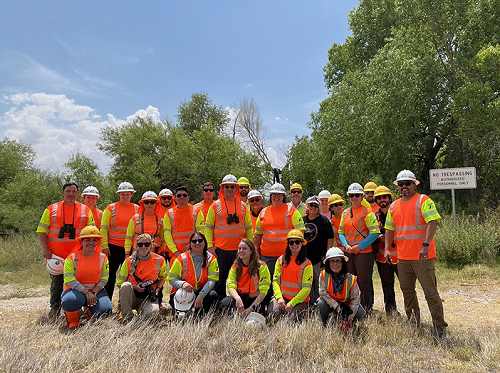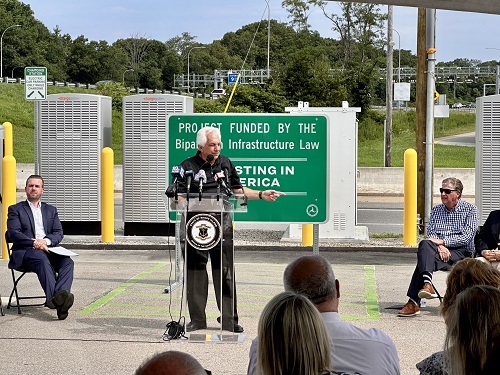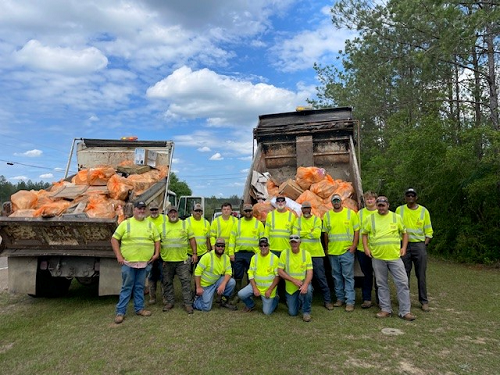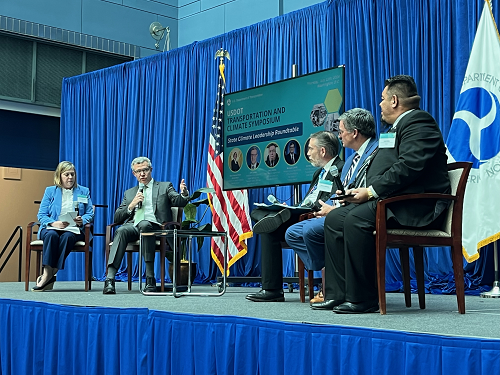FEDERAL ACTION
Balancing Infrastructure and Environment: Challenges and Solutions -The Stream by AASHTO (podcast)
As US bets big on hydrogen for clean energy, local communities worry about secrecy and public health –Grist
Meat mess on Oakland freeway spurs calls for nationwide safety changes -KNTV-TV
The 5 Coastal States That Face the Most Devastating Flood Risk –CityLab
The 9-to-5 commute may be over: The U.S. commuter rail renaissance is just beginning -Mass Transit (op-ed)
COVID-19
The Pandemic’s Tenacious Grip on Traffic Safety –AAA
Post-Pandemic, Micromobility Ridership, Cost on the Rise -Government Technology
NEPA
Beyond NEPA: Understanding the complexities of slow infrastructure buildout -Clean Air Task Force (commentary)
INFRASTRUCTURE RESILIENCE AND SUSTAINABILITY
Derelict vessels present problems for ports -Peninsula Daily News
Using AI in pursuit of better bike paths -UC Santa Barbara
MassDOT Unveils Final Plan for Beyond Mobility Plan –Massachusetts DOT (media release)
Caltrans Unveils New Tool to Prioritize Multimodal Infrastructure Investments to Combat Climate Change -California DOT (media release)
ELECTRIC VEHICLES, INFRASTRUCTURE AND POLICIES
How Texas Is Using Technology To Curb High Pedestrian Fatality Rates -Route Fifty
FAA Announces $427 Million in Grants from Bipartisan Infrastructure Law to Modernize Airports -FAA -(media release)
AIR QUALITY
Alabama Researchers Get Grant Focused On Reducing Diesel Emissions At Ports -WVUA-TV
On Lake Michigan, a coal-fired steamship and ferry eyes a clean-energy future -Bridge Michigan
NATURAL RESOURCES
E-Bikes Are Half the Bicycle Traffic in Maine’s Acadia National Park -Bangor Daily News
A Vast Wetland Park Seeks to Slake a Thirsty Megacity –CityLab
CULTURAL RESOURCES
For one Austin summer camp, public transit is part of the adventure -Texas Standard
What a Beautiful Bus Stop Can Do –CityLab
HEALTH AND HUMAN ENVIRONMENT/ACTIVE TRANSPORTATION
Bikeshare Is More Popular Than Ever. But It’ll Cost You –CityLab
A new pedestrian and bike bridge for Cloverdale -Sonoma Gazette
As bike and scooter ridership soars, safety challenges grow -Route Fifty
Aviation Walk opens in Hickory, North Carolina -WSOC-TV
Adventure Cycling unveils Arkansas’ second U.S. Bicycle Route -KUAF Radio
TRB RESOURCES/RESEARCH/ANNOUNCEMENTS
Visualizing Risk for Resilience -TRB (webinar)
Creating Self-Directed Resiliency Plans for General Aviation Airports –ACRP
Cycling and Scooting Through the Years -USDOT Bureau of Transportation Statistics
Guru Madhavan’s New York Trilogy -Issues in Science and Technology
FEDERAL REGISTER NOTICES
Announcement of Meeting of the National Environmental Education Advisory Council -EPA (Notice of meeting)
National Environmental Justice Advisory Council; Notice of Charter Renewal -EPA (Notice of charter renewal)
Notice of Availability of a Final Environmental Impact Statement for US Wind Inc.’s Proposed Wind Energy Facility Offshore Maryland -Bureau of Ocean Energy Management, Interior (Notice of availability; final environmental impact statement)
Notice of Rail Energy Transportation Advisory Committee Vacancies -Surface Transportation Board (Notice of vacancies on Federal advisory committee and solicitation of nominations)






